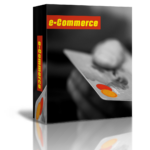As an online store owner, you understand the importance of having a visually appealing and user-friendly website that provides a seamless shopping experience for your customers. With the ever-evolving landscape of e-commerce, it’s essential to have a theme development strategy that meets your business needs. In this comprehensive guide, we’ll explore the best practices, solutions, and techniques for e-commerce theme development, ensuring your online store remains competitive and scalable.
Understanding E-Commerce Theme Development
E-commerce theme development is the process of designing and building custom website themes specifically tailored to meet the unique requirements of an online store. This involves creating a visually appealing design that incorporates essential features such as navigation, search functionality, product categorization, and payment gateways.
According to Digital Commerce 360, e-commerce theme development has become a critical component of successful online stores, with 60% of businesses citing themes as a major factor in their overall customer experience. With the rise of mobile commerce, it’s essential to have a responsive design that adapts seamlessly across various devices and screen sizes.
Key Considerations for E-Commerce Theme Development
When developing an e-commerce theme, there are several key considerations to keep in mind. Firstly, you need to ensure that your theme is fully responsive, meaning it adapts to different screen sizes, orientations, and devices. This includes considering desktop, tablet, and mobile-specific layouts.
Secondly, you should prioritize user experience (UX) and user interface (UI) design. A well-designed theme should provide an intuitive navigation system, clear product categorization, and a seamless checkout process.
Thirdly, consider the importance of security in e-commerce theme development. You need to ensure that your theme integrates with secure payment gateways and follows best practices for data encryption and storage.
E-Commerce Theme Development Solutions
There are several solutions available for e-commerce theme development, ranging from custom-built themes to pre-made templates.
According to Shopify Experts, custom-built themes offer the most flexibility and customization options. This is ideal for businesses with unique branding requirements or specific product features that need to be integrated.
On the other hand, pre-made templates can provide a cost-effective solution for small businesses or those with relatively simple branding needs. However, these templates may require additional customization to meet your business’s specific requirements.
Popular E-Commerce Theme Development Frameworks
Several e-commerce theme development frameworks are popular among developers and businesses alike. Some of the most notable include:
- React: A JavaScript library for building reusable UI components.
- Angular: A TypeScript-based framework for building complex web applications.
- Vue.js: A progressive and flexible front-end framework.
E-Commerce Theme Development Tools
There are numerous tools available to support e-commerce theme development, ranging from design and prototyping software to coding editors and version control systems.
According to Smashing Magazine, some of the most popular design and prototyping tools for e-commerce theme development include Sketch, Figma, and Adobe XD.
Best Practices for E-Commerce Theme Development
When developing an e-commerce theme, it’s essential to follow best practices that prioritize user experience, security, and scalability.
According to Web Design Today, some of the most critical best practices for e-commerce theme development include:
- Responsive design: Ensure your theme is fully responsive across various devices and screen sizes.
- User-centered design: Prioritize user experience and intuitive navigation systems.
- Security and encryption: Integrate secure payment gateways and follow best practices for data encryption and storage.
Conclusion
E-commerce theme development is a critical component of successful online stores, requiring careful consideration of visual appeal, user experience, security, and scalability. By understanding the key considerations, solutions, frameworks, tools, and best practices outlined in this comprehensive guide, you can create an e-commerce theme that meets your business needs and sets you up for success.
References

Photo by Rosiette-Stock on Pixabay
You Also Might Like :



Pingback: International E-Commerce Challenges Solutions